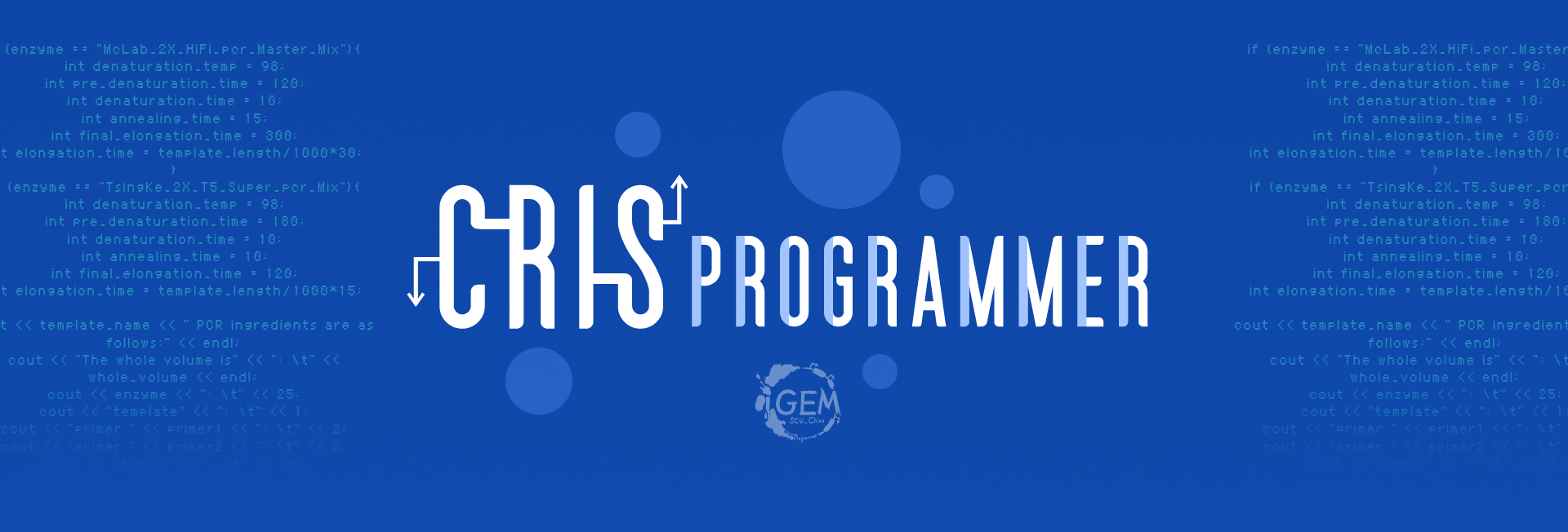
We are devoting to build a CRISProgrammer regulatory platform, using which we can achieve complex metabolism pathway regulation, reduce the difficulty of transformation, even optimize some industrial production process by building synthetic circuits in microorganism.
In our project, we are aiming to utilize the CRISProgrammer system in industrial production, and are constructing an adjustable platform of indigo bio-synthesis. For this purpose, we report the Indi.coli system to achieve the on/off (storage/dyeing) switch of indoxyl bio-synthesis pathway.
The Application Module: Bistable Switch
According to the design of indigo expression, our team deliberately substitute the key enzymes with reporter genes. It looks like a ‘bistable switch’, having two kinds of output with correspondent input. Our bistable switch consists of two main modules, the regulatory module and the reporter module (Figure 1).

The bistable switch is designed as a minimal circuit to demonstrate the feasibility to build a whole CRISProgrammer system, which enables orthogonal regulation and demonstrate the regulation process of indigo synthesis. The detailed working mechanism is showed in the Logic Circuit Page.
What has been achieved
Since then, we have built every component of the indi. coli system and verified their functionality. Three key enzymes in indigo bio-synthesis pathway [*], which can catalyze the reaction from tryptophan into indican, have been successfully expressed in E. coli BL21 strain, with their enzymatic activity proved individually. Surprisingly, indigo has been successfully produced in our lab under the catalytic function of FMO (flavin containing monooxygenase).
What’s more, considering the difficulties of building the big-size Indi. coli system, we choose to demonstrate the feasibility of CRISProgrammer system using reporter proteins as alternatives of indigo synthesis related enzymes. Several basic logic circuits, including a bistable switch, T7 promoter-gRNA (J23)-J23100-GFP circuit, T7 promoter-gRNA (PAM)-PAM-GFP circuit, etc., have already been constructed to test whether the sgRNA/ dCas9 system can function well and orthogonality in engineered bacteria.
At the present stage, we are devoting to co-transform the regulator-reporter circuits introduced above and the dCas9 protein into the E. coli BL21 strains for us to carry out the functional test. Considering the low efficiency of con-transformation, we will probably choose to assemble the basic logic circuits with the dCas9 expression vector in our next step.
Future Work
Adjustable Bio-synthesis of Indigo
We have successfully got our indigo produced by E. coli (Figure 2), and great potential has been presented that it can be efficiently regulated by the CRISProgrammer system. Thus, in next step, we are going to replace the reporter genes with the coding sequence of three enzymes (FMO, UGT, and BGL), and renovation our origin bistable switch, to achieve the application of adjustable indigo biosynthesis in E.coli.






[*] FMO, flavin containing monooxygenase; UGT, UDP-glucosyltransferase; BGL, β-glucosidase
